6 out of 10 college graduates unemployed or underemployed
Student debt remains an enormous societal and economic problem, with the average college graduate leaving school with $29,400 in loans, according to College Access and Success.
It would be one thing if these graduates were entering an economy with many high-paying jobs available, but that simply isn’t the case, Charles Stevens writes in a fantastic piece for People’s World.
Too much debt, too few good-paying jobs
In fact, according to the Bureau of Labor Statistics (BLS), 26% of graduates are unemployed and 37% are ‘mal-employed,’ meaning the jobs they currently have do not require a college degree, such as waiting tables or working in retail. These jobs tend to pay only minimum wage or close to it–simply not enough to cover most graduates’ student loan payments on top of their basic living expenses.
As Stevens writes,
In other words, over 60% of the most recently educated minds in America have no immediate way of paying off their loans.
Because of this debt, he says, college graduates can’t contribute to the economy in a meaningful way.
Many young adults can’t afford to buy houses or cars, and they put off getting married or having children because of the financial burden. They can’t invest or save money because so much of their salary goes toward student loan payments.
Colleges profit off the backs of students
While the sluggish economy is partially to blame for the lack of available jobs for college graduates, the real problem is that students have so much debt to pay off in the first place, Stevens writes.
So who’s to blame for high college costs that leave students saddled with debt?
Stevens says it’s the colleges themselves, which are “operating like businesses.” Like all businesses, he writes, “they are adapting themselves to whatever brings a profit.”
And even when colleges increase financial aid for needy students, it’s not enough because they go ahead and raise tuition to make up for the revenue, he says.
Unfortunately, Stevens’s words are accurate. Even as colleges have claimed to increase college access and financial assistance, they’ve raised tuition so much that they’ve made college even less affordable–especially for low-income students.
And while the government has attempted to help struggling borrowers with repayment plans that allow them to make lower payments, this doesn’t solve the core problem: college tuition is too high in the first place.
Even on a lower-payment plan, student loan interest continues to build, which often forces graduates to pay much more over time than they originally borrowed. Borrowers with private loans at high interest rates, especially, are often still repaying student loans well into their 40s, 50s, or beyond.
Controlling college costs
While we can’t force colleges to lower their prices, there are ways for ordinary families to make college more affordable and avoid crushing student loan debt.
Scholarships, grants, and savings should always be a first source of funding when paying for college. If cost is a concern, it’s crucial t to be thorough in your college search and seek out schools that offer scholarships and generous financial aid packages.
If you’re still applying to college, check out our tips on making college affordable. And if you’re already in repayment, we can help you better manage your student loans. Give us a call at 1-888-234-3907 to learn more about how we help families save money on college.
affording college, college costs, college debt, college loans, paying for college, repayment, s, student loan repayment, student loans
